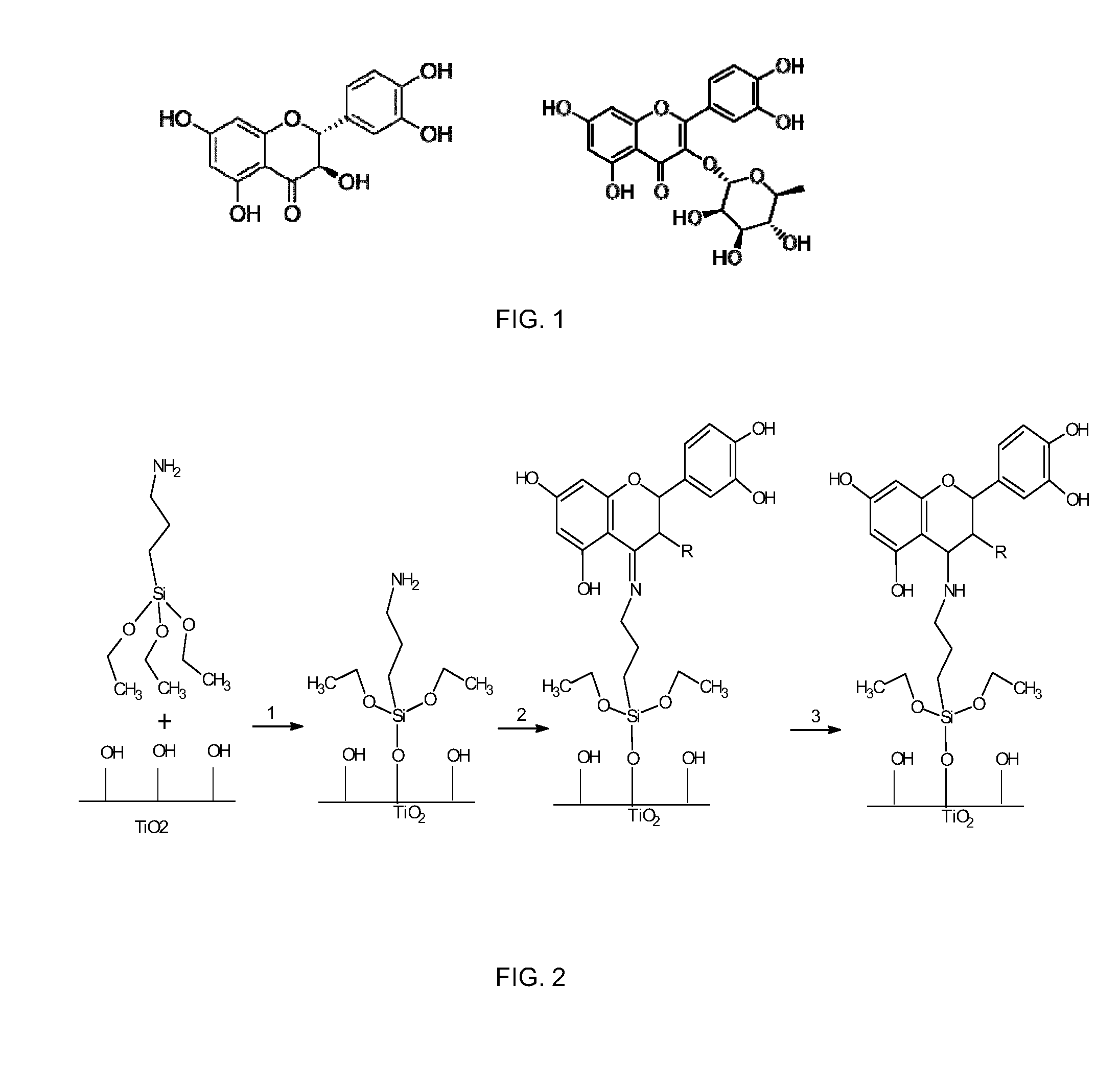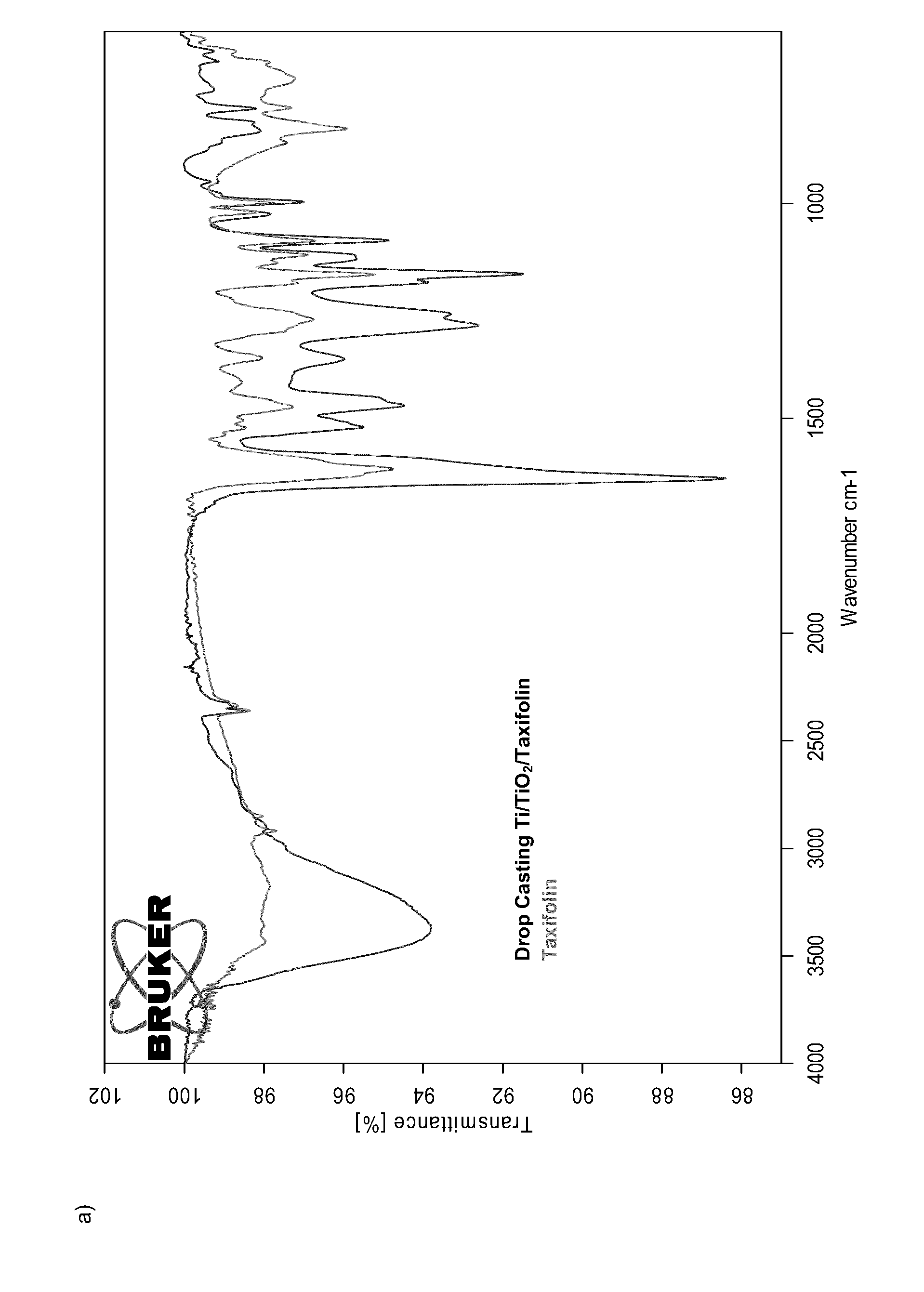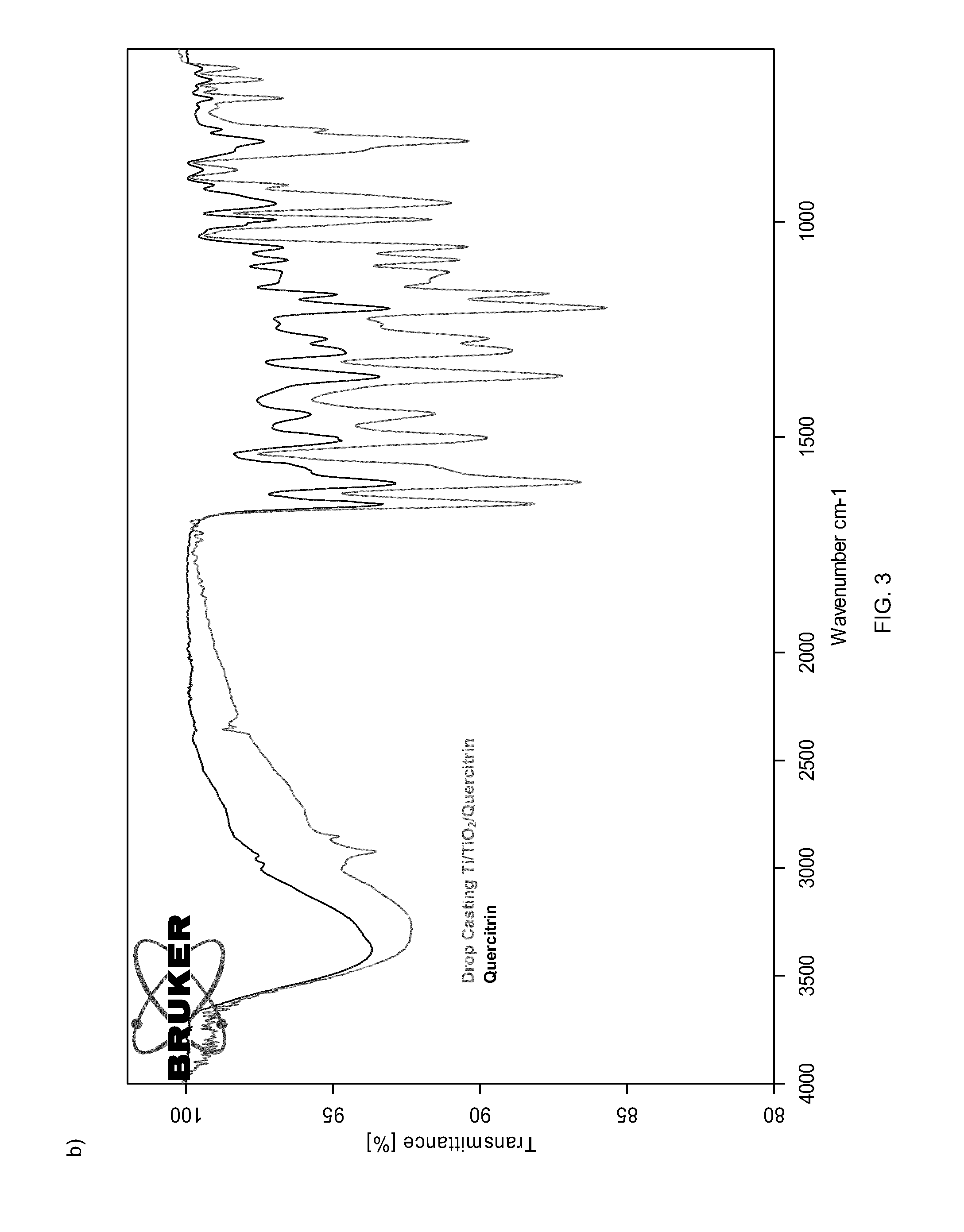Implants for inducing soft and hard tissue integration
a soft and hard tissue integration and implant technology, applied in the direction of biocide, plant growth regulators, sugar derivatives, etc., can solve the problems of biomolecules becoming biologically inactive, low stability of biomolecule fixation, enhanced immunoreactivity, etc., to reduce inflammation, good cell spreading, and not increase toxic effects
- Summary
- Abstract
- Description
- Claims
- Application Information
AI Technical Summary
Benefits of technology
Problems solved by technology
Method used
Image
Examples
example 1
Conclusions Example 1
[0085]Flavonoids taxifolin and quercitrin can be grafted to Ti surfaces either by adsorption, drop casting and covalent linking methods. UV irradiation and passivation are effective pretreatments for Ti surface activation before the immobilization of the biomolecule.
[0086]Flavonoid-coated samples by adsorption and drop casting showed a high release of the flavonoid from the surface after 24 h incubation in water at physiological conditions.
[0087]Covalently grafted samples showed different release behaviors depending on the reduction step. Non-reduced samples showed a low release of the flavonoid from the surface in water after 24 h incubation, while reduced samples using the same conditions did not show release of the flavonoid. As FTIR-ATR analysis of covalently immobilized samples showed the presence of the flavonoids on the Ti surface both for non-reduced and reduced samples, this demonstrates that the flavonoids are covalently linked to the substrate through...
example 2
Conclusions Example 2
[0108]None of the flavonoid-coated surfaces were toxic for HGF. After 24 hours of culture on the different surfaces, HGF possessed the typical fibroblastic spindle-shaped morphology and were distributed throughout the entire surface, without differences among the groups. This demonstrates that despite of the chemical modifications of the metallic surface of the implant by binding the linker and the flavonoid, toxicity has not been increased. Cytoskeleton and nuclei staining also revealed good cell spreading on all surfaces and the formation of prolongations and filopodia to contact each other and to attach to surfaces.
[0109]The different surface modification methods were effective in decreasing inflammation in HGF cells, as shown by the IL-6 mRNA levels. However, only flavonoids that were covalently attached to the implant surface were effective increasing the differentiation of HGF, as shown by the COL3A1 mRNA levels. Thus, to regenerate the gingival soft tissu...
example 3
Conclusions Example 3
[0123]None of the surfaces was toxic for hUC-MSCs. After 24 hours of culture on the different surfaces, hUC-MSCs showed the typical morphology with long thin cell bodies and prominent nucleous, which were placed throughout the entire surface, without differences among the groups.
[0124]As regards to the differentiation profile of the hUC-MSCs, cells cultured on implants that had flavonoids covalently attached showed superior differentiation than cells cultured on flavonoid drop-casted implants, as shown by the higher collagen-1, osteocalcin and, more importantly, runx2. Runx2 is a master organizer of gene transcription in developing and maturing osteoblasts, which are the main cells in hard tissue supporting osseointegrated implants.
PUM
| Property | Measurement | Unit |
|---|---|---|
| pH | aaaaa | aaaaa |
| diameter | aaaaa | aaaaa |
| diameter | aaaaa | aaaaa |
Abstract
Description
Claims
Application Information
 Login to View More
Login to View More - R&D
- Intellectual Property
- Life Sciences
- Materials
- Tech Scout
- Unparalleled Data Quality
- Higher Quality Content
- 60% Fewer Hallucinations
Browse by: Latest US Patents, China's latest patents, Technical Efficacy Thesaurus, Application Domain, Technology Topic, Popular Technical Reports.
© 2025 PatSnap. All rights reserved.Legal|Privacy policy|Modern Slavery Act Transparency Statement|Sitemap|About US| Contact US: help@patsnap.com



